Cuneiform Character
Next, with respect to the Cuneiform Character. When I first went to reside in London, in 1829, I often visited the British Museum. It was the most instructive and interesting of all the public institutions which I haft yet seen. I eagerly seized every opportunity I could spare to spend as many hours as possible in wandering through its extensive galleries, especially those which contained the Assyrian, Egyptian, and Greek antiquities. By careful and repeated examination of the objects arranged in them, I acquired many ideas that afforded me subjects for thought and reflection.
Amongst these objects, I was specially impressed and interested with the so-called "Arrow-head" or "Cuneiform Inscriptions" in the Assyrian Department. These remarkable inscriptions were on large tablets of burnt clay. They formed the chief portion of the then comparatively limited collection of Assyrian antiquities in the British Museum.
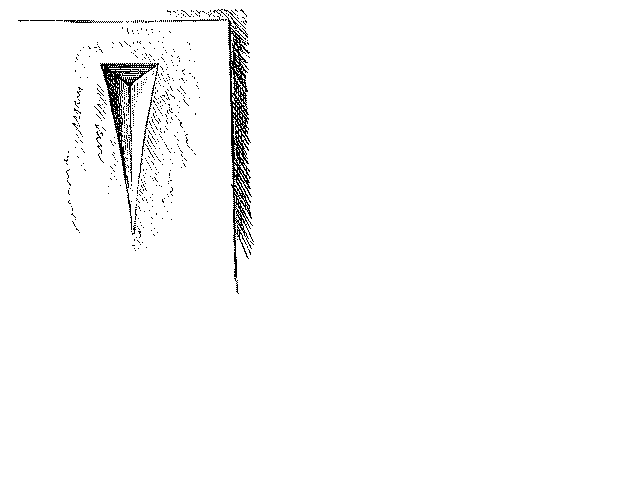 Fig 1.
Fig 1.- I was particularly impressed with the precision and simple beauty of these cuneiform inscriptions, -- especially with the strikingly distinctive nature of what I may term the fundamental or elementary wedge- like form, of which the vast variety of letters or words of these inscriptions were composed. The triangular or three-sided indentation will be observed in the above engraving (Fig. 1). This elementary form, placed in various positions with respect to each other, appeared to be capable of yielding an infinite variety of letters and words, as seen in Fig. 2.
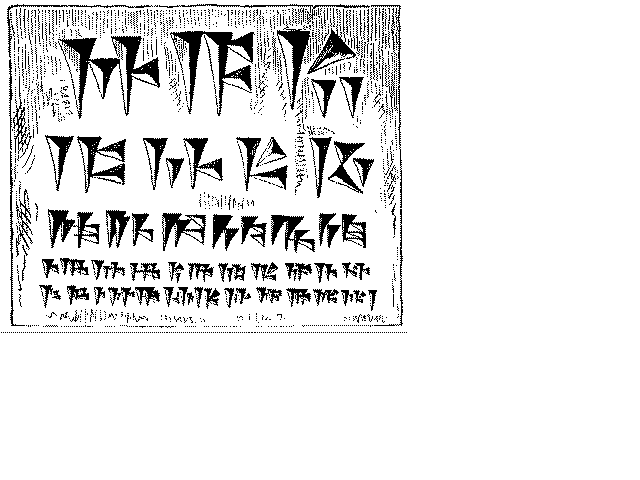 Fig 2.
Fig 2.- I may here mention that I entered upon this interesting subject with no pretensions as a linguist, nor with any idea of investigating the meaning of these remarkable inscriptions; but only as a Mechanic, to ascertain the manner in which the striking characters were produced, so as to convey words and ideas through their variety of combinations. I soon perceived that the simple but distinctive characters shown in the above representations were essentially connected with the employment of plastic clay; this being the material most suitable for their impression, by means of a three-sided instrument or stylus. The angular extremity of this instrument, when depressed into the surface of a tablet of plastic clay in different positions and directions, would leave these cuneiform impressions in all their beautifully distinct and characteristic forms. And thus, after the tablets had been subjected to fire and made into hard brick, the impressions have come down to us, after the lapse of thousands of years, as fresh and distinct as if they had been produced but yesterday!
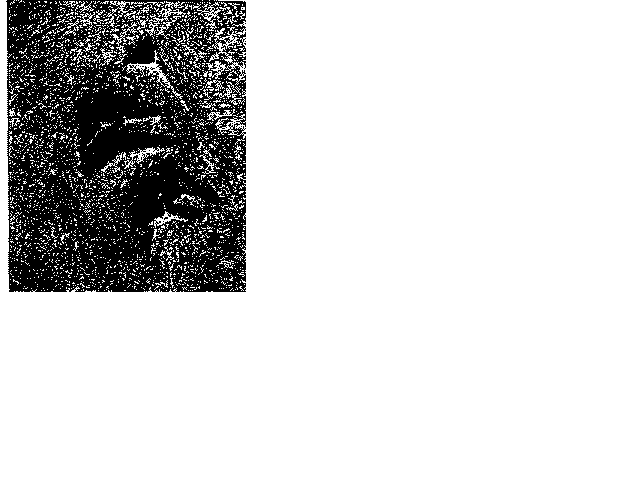 Fig 3.
Fig 3.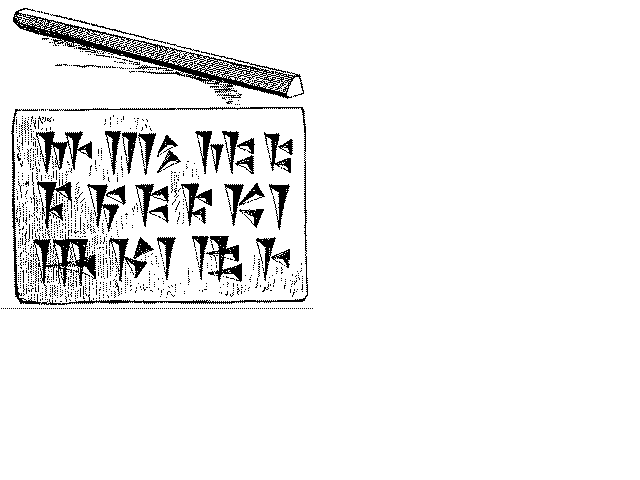 Fig 4.
Fig 4.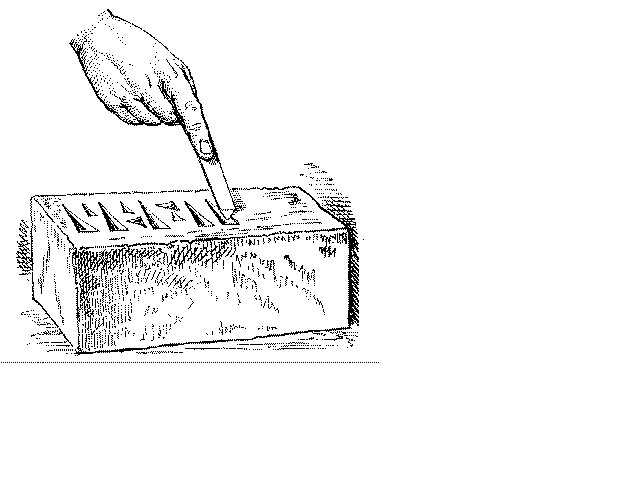 Fig 5.
Fig 5.- Refer back to Fig. 2, and it will be found that any variety in the size of the cuneiform inscriptions may be produced by the same stylus, by simply depressing the angular end of it to a greater or less depth into the surface of the clay. In many of the most elaborate inscriptions, a certain lob-sidedness of the cuneiform character may be observed. This is due to the inscriber having held his stylus somewhat
I was so fortunate as to have my conjectures confirmed with respect to the exact form of the instrument by which these remarkable characters are produced, observing, in what appeared to be a hastily-formed inscription on the edge of a large brick, that the inscriber had apparently used rather more pressure on his stylus than was requisite. In consequence of which, the end of it had been so deeply depressed into the soft clay as to leave an exact counterpart of its size and form. I secured a cast of this over-deep impression of the stylus, from which Fig. 3 is taken, after a photograph.
In order further to illustrate the simple mode of producing inscriptions on tablets of clay, I give in Fig. 4 a tablet inscription produced by means of the stylus which is seen laid over the tablet.
The next illustration(Fig.5) is intended to convey an idea of the manner in which the stylus was held and applied to the surface of the clay when a cuneiform inscription was being produced. The upper, flat, or third side of the stylus enabled the inscriber to keep it in correct relative position in respect to the tablet, yielding at the same time a convenient flat surface upon which to rest the end of his finger when indenting the angular end into the clay.
| Previous chapter | Back | Home | Email this | Search | Discuss | Bookmark | Next chapter/page |